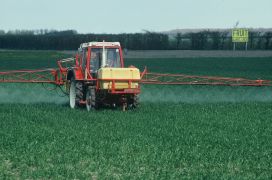This is an old revision of the document!
«!– Start Inhalt –>
<div class=rightwindow>
<H2>Reference run</H2>
<H3>Overview</H3>
<TABLE padding="20px"><TR><TD>
<P>The reference run or baseline serves as a reference point for ex-ante impact analysis
with CAPRI. It reflects the most probable development in agricultural markets
from global to regional scale for 8-10 year time horizon, at the current legislation.
It integrates agricultural market projections from other insitutions as FAPRI, FAO and DG-AGRI.
Unique for CAPRI are regional resolution below the national level for EU27 at the level of
NUTS 2 regions, and the Bayesian methodology applied.</P>
<P>The <A HREF="supply.htm">supply</A> and <A HREF="market.htm">market</A> module
are calibrated to results of the reference run.</P>
<P>In opposite to many other reference run approaches, CAPRI employs a Bayesian estimation
framework to define a mutually consistent set of projection values for activity levels,
yields, production, feed and processing demand, human consumption, trade etc. Basically,
all major equations from the supply and market modules are defined as in an optimization
framework which maximizes the joint posterior density for given a priori distribution
of the different elements.</P>
</TD>
<TD><P><a href="images\refrun.gif"><img style="text-decoration: none;border: none;color: white" src="images\refrun.gif" width="500px"/></a></P>
</TD>
</TR>
</TABLE>
<H3>Methodology</H3>
<TABLE padding="10 px"><TR>
<TD><P><a href="images\support.jpg"><img style="text-decoration: none;border: none;color: white;padding:20px;margin:20px;" src="images\support.jpg" width="500px"/></a></P>
</TD>
<TD>
<P>The a priori distributions are derived from two different sources. For all elements,
long terms are projected. Using "no change" as the zero hypothesis, a weighted average
between the base year value and the trend estimate is calculated, using R squared
as weight for the trend estimate.</P>
<P>The resulting independent projections are then corrected
by the relative effect of implementing already decided upon changes in agricultural policies in the base
year - so-called "policy shifts". These effects are derived from a simulation with the full modelling system. The
resulting estimates along with the estimation error of the trend deliver a priori distributions
for all items in the estimation framework.</P>
<P>In a first step, the estimation is solved for these trend support, indepedently for each country. Afterwards, results are aggregated to
EU. The projections of other instutions are then added, and replace where available the supports based on trends.
If the projections are only reporting values for the EU and not for individual countries,
the country results from the first steps are used to distributed the EU estimate. The standard errors for the there projections,
especially for those provided by DG-AGRI, is set rather narrow, ensuring that the values are recovered as long as they do not violate
the consistency restrictions.</P>
<P>The estimation is then repeated in a second step based on the updated supports. The country results are then taken is given, and broken
down in a similar framework to NUTS 2 level, and from there to farm type groups.</P>
</TD>
</TR>
</TABLE>
<H3>Quality control</H3>
<P>Due to the NUTS 2 resolution with its 250 regions, and the high number of activities, outputs and inputs covered by the CAPRI modelling
system, the references comprises several Mio numbers. Therefore, aggregates over activities (single cereals aggregated to all cereals)
and products, and over countries to EU15, EU10 etc. are defined and reported in tables accessible via the Graphical user interface.
Those tables compare systematically the different inputs (trend estimate, policy shift, estimation results from the different steps).</P>
<P>Nevertheless, checking results for plausibility remains a challenge. An interested comparison of the methdology between the reference
run exercise for the OECD/FAO AGLINK-COSIMA model with an estimated input of 20 person months and the CAPRI reference run
with an estimated inputs of about 2 person months is reported by <A HREF=http://purl.umn.edu/44120>Adenauer 2008</A>.</P>
<H3>More information</H3>
<P class=“pubparagraph”><span class=“pubAuthor”>Witzke H.P. and Adenaeuer M.</span>:<BR>
<I><a HREF=“docs\capri_baseline.pdf” class=“intext”>Capri Baseline (pdf, 13 slides)</a></I></p>
</div><!– Ende RightWindow –>
</div><!-- Ende content -->
</HTML>
Except where otherwise noted, content on this wiki is licensed under the following license: CC Attribution-Share Alike 4.0 International



